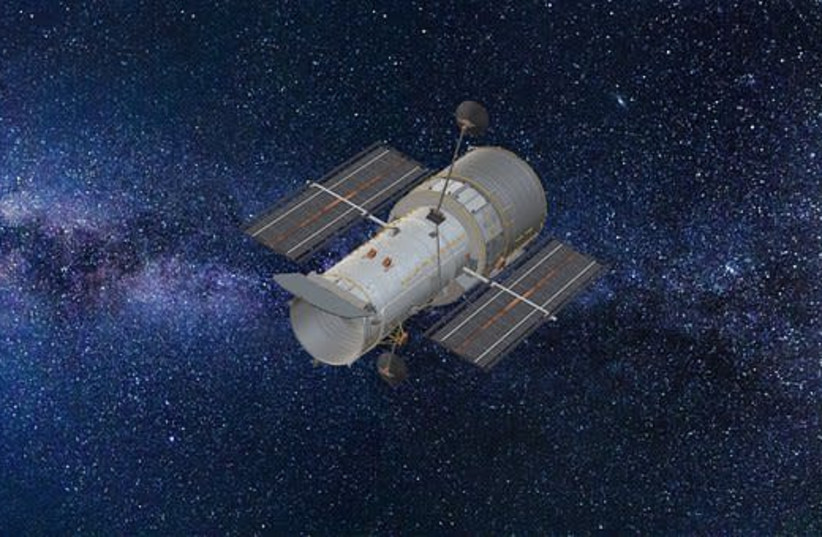NASA’s James Webb Space Telescope (JWST) is set to revolutionize the field of astronomy, giving scientists a chance to see more of the infinite reaches of the cosmos than ever before.
Scientists from all over the world are eager to get access to it for their own research, as its equipment is significantly more advanced than NASA’s previous flagship space telescope, the Hubble Space Telescope, or than any other space telescope.
Not just anyone can get this approval, though. Applicants from all over the world propose research plans for the JWST during a limited window of use, and only the best applicants get approved to use it.
Dr. Allona Vazan of Astrophysics Research Center of the Open University (ARCO) in Israel is one researcher who will get the chance.
Vazan is part of an international team led by Prof. J.M. Desert from the University of Amsterdam who will use the JWST to study a specific star system named V1298 Tauri, a relatively young star 350 light years away from the Earth with four exoplanets orbiting it.
The goal of this scientific proposal: Use JWST to observe the atmospheres of these planets to see what kind of materials are there.
These four planets are all relatively young as well, meaning they are still arguably right after their formation stage. These planets have gas envelopes that they are expected to lose according to theories.
“We know from theories and observations that at this age in the star’s life-cycle, the stellar luminosity of the star is quite high,” Vazan explained. “When planets are so close to the star – much closer than Earth is to the Sun – we expect the gas in the atmosphere to be stripped away by the star’s radiation.”
But while some of the gas might be gone, other materials will still be there. This is exactly what the team wants to study: Which materials are in these atmospheres, which can – in turn – help scientists further understand the formation of young planets.
“We can learn about young planets and their formation through observation,” Vazan said. “Right now, we have theories, but we don’t have detailed observation of this phase.”
While one can study exoplanet atmospheric composition with the Hubble, its resolution is much lower than the JWST, making NASA’s newest space telescope a more ideal choice.
Vazan’s role on the team isn’t to lead it or directly observe the planets herself, though. Rather, her role is as a theoretician – to interpret the observations from the perspective of planetary evolution.
“What I care about is if there is a process of planets losing mass and how fast they lose it, as well as the types of metals in the atmosphere,” she explained, specifying that metals, in astronomy, refers to anything that isn’t helium or hydrogen, the two lightest known elements.
Metals can manifest in the form of material compounds, and Vazan wants to see which of these compounds heavier than hydrogen and helium are in the atmospheres of these planets, because this can tell a lot about the planet itself.
“If the outermost regions are rich in metals, it can indicate how the composition of the planet’s interior is distributed,” she explained.
But this can indicate more than just planetary composition – it can also indicate where the planets were formed.
This can be inferred by the amount of volatiles (chemical elements and compounds that can be readily vaporized) on a planet. If there are fewer volatiles, then the planet was formed at its current orbital distance, something known in astronomy as in situ planet formation. By contrast, if there are a lot of volatiles, that means the planet was originally formed somewhere else and migrated to its current orbit. These planets would have essentially moved places in a process known as planetary migration.
This concept is widely theorized to be the reason for the presence of hot Jupiters, Jupiter-sized planets that have very short orbits around their stars, as it is widely thought that these planets cannot be formed so close to their stars due to the high temperatures and lack of sufficient mass. This is something that may have happened in our own solar system, too, specifically to the larger gas giants past the asteroid belt.
The field of exoplanet study has grown considerably in recent years as scientists have found more ways to better understand the many worlds populating space. These observations and interpretations of exoplanets, such as the ones surrounding V1298 Tauri, could pave the way to understanding more about the formation of not just these worlds, but of the mechanisms surrounding the formation of our own solar system, and is another step in gaining a better understanding of the wider universe.
The launching of JWST is a major step in this direction, but naturally, this will take time.
The space telescope launched on December 25 and will take time to reach its destination near the L2 Lagrange point, and even more time for Vazan and the team she is part of to be able to get to use it. As such, time will tell to see the result of this study and the many new possible avenues astronomers will be able to explore with NASA’s newest space telescope at their disposal.

